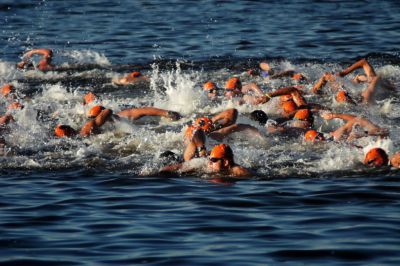
Minneapolis Heart Institute Foundation® study reviewed triathlon participants from the past 30 years to define the risk of death and cardiac arrest among triathletes and factors associated with these outcomes.
MINNEAPOLIS, MN--Triathlons are becoming increasing popular as a public competitive sport combining swimming, bicycling and running. However, over the years, the number of race-related fatalities has generated concern regarding the safety of athletes during this competitive sport. As popularity with triathlons grew, researchers at Minneapolis Heart Institute Foundation® decided it was time to present an expanded profile involving more than 9 million participants over 30 years of competition to define more completely the public health implications of triathlon participation. The research is being published today in the Annals of Internal Medicine.
The study, led by Kevin Harris, MD, of Minneapolis Heart Institute Foundation, reviewed a total of 135 sudden deaths, resuscitated cardiac arrests and trauma related-deaths assembled from sources including the U.S. National Registry of Sudden Death in Athletes and USA Triathlon records from the past 30 years. The majority (67%) of the sudden deaths and arrests occurred in the swim segment. Incidence of death/arrest was more prevalent in men than women. Risk for men increased significantly with age and was significantly greater for those over 60 years old. The death/arrest risk was similar for short, intermediate, and long races.
Principal investigator Harris notes, “Physical activity is important for cardiovascular health. These findings highlight that death and cardiac arrest can occur in the triathlon and exceeds that in the general population and other endurance sports. Some deaths in the triathlon can be avoided by awareness of the risks for the participants, particularly in the swim portion and in middle-aged males who may have cardiovascular disease.”
Another surprising and important observation of this study was the high frequency of clinically silent cardiac abnormalities (present in about 50% of those with autopsy reports available) that could have caused or contributed to the sudden cardiac deaths of these triathletes. Males over 40 years represent an age group that should consider the potential risks of triathlon competition and the value of screening for cardiovascular disease by their physician prior to participation.
SOURCE: Minneapolis Heart Institute Foundation
